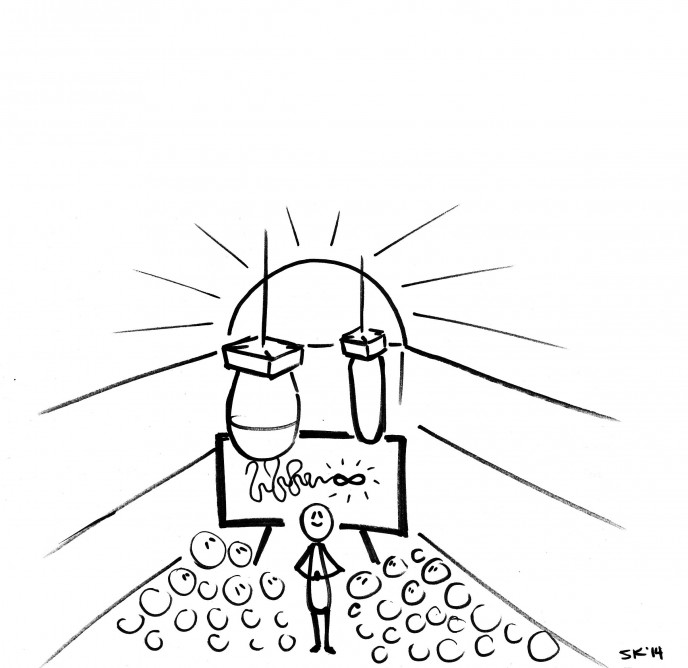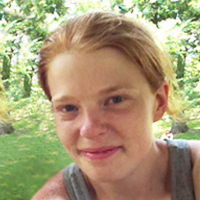Design Week Portland (DWP) is a week-long festival made up of independently produced events sprinkled across the city. It’s a celebration of all disciplines of design, and spotlights the critical role design is playing in Portland and beyond. There’s no doubt that Portland has a thriving design community, but it’s often hidden behind closed studio doors or scattered amongst independents. DWP breaks us away from the day-to-day norm, mixes up all levels and types of creators and allows us to hear and see things we would not typically have access to. DWP creates the right conditions for unique experiences to emerge–similar to the environment that Hatch produces.
This past week’s DWP celebrations at Hatch turned into one of those experiences. It felt as if we had the right place (Hatch), with the right conversation (Biomimicry for Creative Innovation’s (BCI) events), with the right piece of art (Yukiyo Kawano’s bombs installation – Fat Man and Little Boy) to make a very “relevant moment” for people.
Quick rewind:
During Monday evening’s DWP event about 100 people gathered at Hatch for our Design and Biomimicry lecture. Initially struck by the beauty of the space itself, attendees also commented on how impressed they were by all the things that were happening at the seemingly hidden gem that is Hatch. We had the right place, and it felt very personable.
For the lecture itself, I shared my take on how everybody can use more bio-aligned design in order to move beyond human-centered practices and on to life-thriving innovation. In short, it’s something like: “As humans, we’re decent at figuring out other people. Design is good for that, but we need to get better at learning from all of nature—biomimicry helps with that. Ultimately, here’s how we can change the way we think, and start thinking about ourselves as a part of nature, not apart from it…” We had the right conversation: discussing what we might do moving forward.
Beautiful bombs
Finally, the two beautifully striking life-sized replicas of the atomic bombs (made out of old kimonos by Yuki) that America dropped on Japan were gently moving above the audience’s heads. They’d be looking at the illustrations and visual metaphors in my presentation while occasionally catching a glimpse of the bombs swaying slightly above them. We had the right artwork to bring the metaphors back to the reality of the situation.
Feeling deeply reflective because of Yuki’s artwork and empowered by our lecture discussion, they also felt equipped with the support of a flourishing community happening at Hatch. Without saying anything about them, or really planning for this to happen, people began to think, “We can’t not do something.” The moment felt so real, relevant, and urgent. And it is.
The next day, we had a BCI workshop at Hatch to provide the tools and a place. We wanted to show how it feels to use bio-aligned design and be radically innovative when solving challenges. All-in-all it was a more memorable Design Week than we could ever have planned. Thank you to all the folks that helped create that moment, and who continue to inspire others to design our future with purpose.
Post originally written as a guest blog post by Stefanie Koehler (MASD ’13) of Biomimicry for Creative Innovation and published to the Hatch blog on October 15, 2014. Sketch courtesy of Stefanie Koehler.

